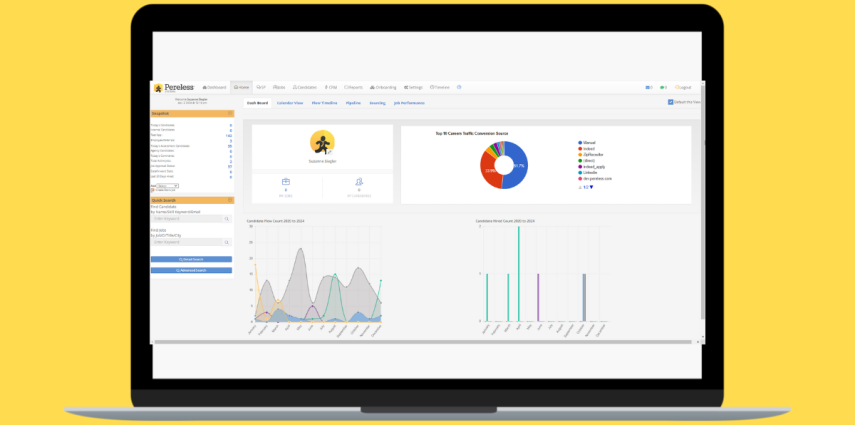When you’re investing in an Applicant Tracking System, you’re not just choosing software — you’re choosing a support experience. At Pereless Systems, we believe outstanding customer service isn’t an add-on. It’s a core part of who we are and what our clients value most.
In a world where support tickets disappear into automated queues and “chatbots” send you in circles, Pereless Systems does things differently. When you choose us, you get more than a platform. You get a partnership with real humans who know your name, understand your needs, and genuinely care about your success.
Real People. Real Answers. Real Support.
At Pereless Systems, we don’t hide behind automation. Yes, we love smart technology, but we love human connection more. That’s why our customer service is built on direct access to real people who can actually help you — not scripted bots or endless phone menus.
When you reach out to Pereless Systems, you’re connected with knowledgeable team members who are:
✔ Responsive
We know hiring moves fast, and your ATS should keep up. Our support team answers quickly, with clear solutions — not canned responses.
✔ Experienced
Our people understand recruiting, HR workflows, and the realities of day-to-day talent acquisition. You’ll talk to experts, not generalists reading a manual.
✔ Personable
We build relationships. You’re never treated like Ticket #4728. You’re a partner, and we’re invested in your long-term success.
A Support Experience Built Around You
Every organization is unique, and so are your hiring needs. That’s why Pereless Systems support isn’t one-size-fits-all. Whether you’re refining workflows, adding integrations, or onboarding new team members, we’re here to help guide you.
We Offer:
- One-on-one assistance whenever you need it
- Flexible support options tailored to your processes
- Hands-on guidance during setup, migration, and beyond
- Friendly check-ins — because we actually want to make sure you’re doing well
We’re committed to making your experience smooth, supported, and stress-free.
Technology Designed to Work. People Designed to Help.
Our ATS is powerful, intuitive, and customizable — but even the best technology is only as good as the support behind it. That’s why Pereless Systems is built on a simple promise:
The right technology, backed by the right people.
You deserve an ATS partner who listens, problem-solves, and communicates like a real human. And at Pereless Systems, that’s exactly what you get.
Bradford’s Takeaway
If you’re tired of feeling like just another ticket in somebody’s system, it’s time to experience a better way. When you work with Pereless Systems, you get technology that works brilliantly and a team that works for you.












